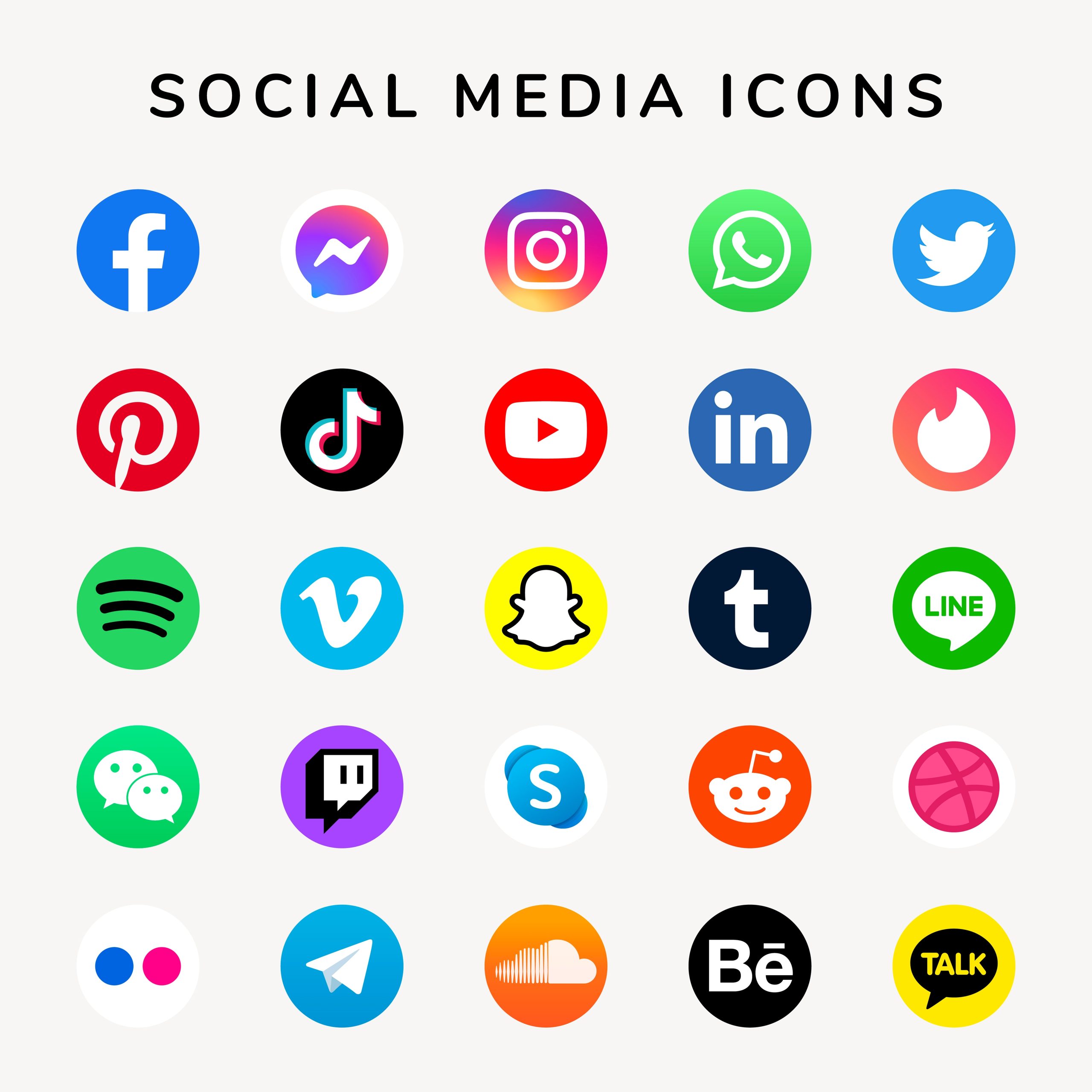
In today’s digital landscape, mastering social media publishing is essential for achieving optimal omni-channel success. With millions of users engaging on various platforms, brands need to strategically leverage social media to reach and connect with their target audience effectively. But how do you ensure your social media publishing efforts yield the desired results?
In this article, we will delve into the strategies and best practices for mastering social media publishing. From understanding your target audience’s preferences to crafting compelling content and utilizing the right tools, we will explore the key elements that contribute to successful social media campaigns.
But it’s not just about posting content. It’s about building a cohesive brand voice across all social media channels. Your brand’s voice should be consistent, authentic, and engaging, resonating with your audience and reflecting your core values. We’ll show you how to develop and maintain a strong brand voice on social media platforms.
Join us on this journey as we uncover the secrets to mastering social media publishing for optimal omni-channel success. Get ready to elevate your social media game and stand out in the digital crowd.
Understanding the importance of social media publishing
Social media publishing plays a crucial role in shaping your brand’s online presence. It allows you to showcase your products or services, engage with your audience, and build brand loyalty. By consistently publishing high-quality content, you can establish your brand as an industry leader and gain a competitive edge.
One of the key benefits of social media publishing is its ability to increase brand visibility. With billions of active users on platforms like Facebook, Instagram, Twitter, and LinkedIn, your content has the potential to reach a wide audience. By leveraging social media effectively, you can attract new customers, drive website traffic, and ultimately increase your sales.
Moreover, social media publishing allows you to interact with your audience in real-time. It provides an opportunity for direct communication, enabling you to address customer queries, resolve issues, and build meaningful relationships. By actively engaging with your followers, you can foster brand loyalty and turn them into brand advocates.
The impact of social media publishing on omni-channel success
Omni-channel marketing is all about creating a seamless experience for your customers across different channels. Social media publishing plays a critical role in achieving this goal by enabling you to maintain a consistent brand voice across all platforms. By delivering a coherent message, you can ensure that your audience receives a unified brand experience, regardless of the channel they are engaging with.
Furthermore, social media publishing allows you to leverage user-generated content (UGC) to enhance your omni-channel strategy. UGC refers to any content created by your customers, such as reviews, testimonials, or user-generated photos. By incorporating UGC into your social media posts, you can build trust and credibility, as well as encourage user engagement.
Another significant impact of social media publishing on omni-channel success is its ability to drive traffic to your website. By strategically linking to your website in your social media posts, you can generate qualified leads and increase conversions. Additionally, social media platforms provide valuable data and insights that can help you optimize your overall marketing strategy.
Social media publishing statistics and trends
Before diving into the strategies and best practices for mastering social media publishing, let’s take a look at some key statistics and trends that highlight the importance of this marketing channel.
– According to Statista, there are over 3.96 billion social media users worldwide, representing approximately 50% of the global population.
– The average daily time spent on social media by internet users is around 2 hours and 25 minutes.
– Instagram and Facebook are the most popular social media platforms, with 1.16 billion and 2.8 billion monthly active users, respectively.
– Video content is on the rise, with 85% of businesses using video as a marketing tool.
– Social media advertising spending is expected to reach $110 billion by 2024.
These statistics demonstrate the massive potential of social media publishing for businesses of all sizes. By leveraging the power of social media, you can reach a vast audience, increase brand awareness, and drive meaningful engagement.
Developing a social media publishing strategy
To master social media publishing, it is crucial to develop a well-defined strategy. A social media publishing strategy outlines your goals, target audience, content themes, posting frequency, and engagement tactics. By having a clear plan in place, you can ensure that your efforts are focused and aligned with your overall marketing objectives.
1. Define Your Goals: Start by identifying what you want to achieve through social media publishing. Is it brand awareness, lead generation, customer engagement, or all of the above? Set specific, measurable goals that align with your overall business objectives.
2. Know Your Target Audience: Understanding your target audience is key to creating relevant and engaging content. Conduct market research and analyze your existing customer base to identify their demographics, preferences, pain points, and interests. This information will help you tailor your content to resonate with your audience.
3. Craft Compelling Content: Content is at the heart of social media publishing. Create high-quality, valuable content that educates, entertains, or inspires your audience. Use a mix of formats, such as images, videos, infographics, and blog posts, to keep your content fresh and engaging.
4. Choose the Right Platforms: Not all social media platforms are created equal. Identify the platforms where your target audience is most active and focus your efforts there. For example, if you are targeting a younger demographic, platforms like Instagram and TikTok might be more effective.
5. Plan Your Posting Schedule: Consistency is key when it comes to social media publishing. Develop a posting schedule that ensures a steady stream of content without overwhelming your audience. Use social media management tools to schedule your posts in advance and maintain a consistent presence.
6. Engage with Your Audience: Social media is a two-way street. Encourage interaction by responding to comments, messages, and mentions in a timely manner. Engage with your audience by asking questions, running polls, or hosting live Q&A sessions. This will help foster a sense of community and strengthen your brand’s relationship with its followers.
7. Monitor and Analyze: Regularly monitor your social media metrics to track the success of your publishing efforts. Analyze data such as engagement rates, reach, click-through rates, and conversions to identify what is working and what needs improvement. Use these insights to refine your strategy and optimize your future content.
By following these steps, you can lay a solid foundation for your social media publishing strategy and increase your chances of achieving optimal results.
Creating engaging and shareable content for social media
Creating engaging and shareable content is crucial for capturing your audience’s attention and driving organic reach. Here are some strategies to help you craft compelling social media content:
1. Know Your Audience: As mentioned earlier, understanding your target audience is key to creating relevant content. Tailor your messaging, tone, and content formats to resonate with your audience’s preferences and interests.
2. Tell a Story: Storytelling is a powerful tool that can captivate your audience and create an emotional connection. Use storytelling techniques to craft narratives that align with your brand’s values and mission.
3. Use Visuals: Visual content is more likely to catch the eye and stand out in users’ social media feeds. Incorporate eye-catching images, videos, and infographics into your posts to make them more engaging and shareable.
4. Include Calls-to-Action: Encourage your audience to take action by including clear calls-to-action (CTAs) in your social media posts. Whether it’s visiting your website, subscribing to your newsletter, or making a purchase, CTAs guide your audience towards the desired action.
5. Leverage User-Generated Content: User-generated content (UGC) is a great way to engage your audience and build social proof. Encourage your followers to share their experiences, reviews, or photos using a branded hashtag. Repost and acknowledge UGC to show appreciation for your customers and foster a sense of community.
Remember, the key to creating engaging and shareable content is to provide value to your audience. Focus on solving their problems, entertaining them, or inspiring them, and they will be more likely to engage with and share your content.
Optimizing your social media posts for different channels
Each social media platform has its own unique features, audience demographics, and content formats. To maximize your social media publishing efforts, it is essential to optimize your posts for each channel. Here are some tips to help you get started:
1. Facebook: Use eye-catching visuals, engaging captions, and relevant hashtags. Consider using Facebook Live or Stories to showcase behind-the-scenes content or host live events.
2. Instagram: Prioritize high-quality visuals and use Instagram’s features like Stories, Reels, and IGTV to diversify your content. Leverage popular hashtags and engage with your audience through comments and direct messages.
3. Twitter: Keep your tweets concise and to the point. Use relevant hashtags and tag relevant accounts to increase your reach. Engage in conversations, retweet relevant content, and participate in trending topics to boost your visibility.
4. LinkedIn: Share professional and industry-specific content, such as thought leadership articles, industry insights, and company updates. Engage in relevant LinkedIn groups and connect with industry professionals to expand your network.
5. YouTube: Create engaging video content that educates, entertains, or inspires your audience. Optimize your video titles, descriptions, and tags for search engine optimization. Encourage viewers to like, comment, and subscribe to your channel.
6. Pinterest: Create visually appealing pins with clear descriptions and relevant keywords. Organize your boards and optimize them for searchability. Engage with other users by repinning their content and commenting on their pins.
Remember to adapt your content to suit the unique characteristics of each platform while maintaining a consistent brand voice across all channels. This will help you maximize engagement and reach a wider audience.
Utilizing scheduling and automation tools for efficient social media publishing
Managing multiple social media platforms can be time-consuming and overwhelming. To streamline your social media publishing efforts, consider utilizing scheduling and automation tools. These tools allow you to plan, schedule, and automate your social media posts, saving you time and ensuring consistent posting.
1. Hootsuite: Hootsuite is a popular social media management platform that allows you to manage multiple social media accounts, schedule posts in advance, and analyze your social media performance.
2. Buffer: Buffer is another widely used social media scheduling tool that enables you to plan and schedule posts across various platforms. It also provides analytics to help you track the success of your social media campaigns.
3. Sprout Social: Sprout Social offers a comprehensive suite of social media management tools, including scheduling, publishing, and analytics. It also provides features for social listening and reputation management.
4. Later: Later focuses primarily on Instagram scheduling and allows you to plan and schedule your Instagram posts, stories, and IGTV videos. It also provides visual planning and analytics features.
5. MeetEdgar: MeetEdgar is a social media automation tool that allows you to create a library of evergreen content and automatically repost it at regular intervals. This ensures a consistent flow of content even when you’re not actively creating new posts.
These tools can help you stay organized, save time, and maintain a consistent posting schedule. Experiment with different tools to find the one that best suits your needs and integrates seamlessly with your social media strategy.
Measuring the success of your social media publishing efforts
To continuously improve your social media publishing strategy, it is essential to measure and analyze the success of your efforts. Here are some key metrics to consider when evaluating the performance of your social media campaigns:
1. Engagement Metrics: Engagement metrics, such as likes, comments, shares, and click-through rates, indicate how well your content resonates with your audience. Analyze these metrics to identify your most engaging content and refine your future posts.
2. Reach and Impressions: Reach refers to the number of unique users who have seen your content, while impressions represent the total number of times your content has been displayed. These metrics provide insights into the visibility and exposure of your social media posts.
3. Conversion Metrics: Conversion metrics, such as website traffic, lead generation, and sales, indicate the effectiveness of your social media campaigns in driving desired actions. Track the number of visitors referred from social media, leads generated, and conversions attributed to your social media efforts.
4. Audience Demographics: Analyzing the demographics of your social media audience, such as age, gender, location, and interests, can help you tailor your content to better suit their preferences and needs.
5. Competitor Analysis: Keep an eye on your competitors’ social media strategies and performance. Benchmark your metrics against industry averages and identify areas where you can improve.
Regularly monitor these metrics and use the insights gained to refine your social media publishing strategy. Experiment with different types of content, posting times, and engagement tactics to optimize your results.
Best practices for cross-promoting content across different social media platforms
Cross-promoting your content across different social media platforms is an effective way to reach a wider audience and maximize your content’s exposure. Here are some best practices for cross-promoting your content:
1. Repurpose Content: Adapt your content to suit the format and style of each platform. For example, you can create short teaser videos for Instagram, share blog excerpts on LinkedIn, or create image collages for Pinterest.
2. Use Platform-Specific Tags and Hashtags: Utilize platform-specific tags and hashtags to increase your content’s discoverability. For example, on Instagram, use relevant hashtags in your captions, and on Twitter, tag relevant accounts to increase your reach.
3. Promote Across Channels: Promote your content on one social media platform by sharing links, snippets, or previews on other platforms. For example, you can share a link to your latest blog post on Twitter and Facebook, or create a teaser video for a YouTube video on Instagram.
4. Encourage Cross-Platform Engagement: Engage with your audience across different platforms by cross-promoting conversations, contests, or giveaways. For example, you can ask your Instagram followers to participate in a contest on Twitter by using a specific hashtag.
5. Leverage Influencer Marketing: Collaborate with influencers in your industry to cross-promote your content on their social media channels. This can help you tap into their audience and gain additional exposure.
By cross-promoting your content, you can extend its reach, increase engagement, and build a cohesive brand presence across multiple social media platforms.
Conclusion: The key to mastering social media publishing for omni-channel success
Mastering social media publishing is essential for achieving optimal omni-channel success. By understanding the importance of social media publishing, developing a robust strategy, creating engaging content, optimizing for different channels, utilizing scheduling tools, measuring success, and cross-promoting content, you can elevate your social media game and stand out in the digital crowd.
Remember, social media is a constantly evolving landscape, so it’s essential to stay up-to-date with the latest trends, platforms, and best practices. Continuously analyze your results, experiment with new ideas, and adapt your strategy accordingly. With dedication, creativity, and a data-driven approach, you can unlock




